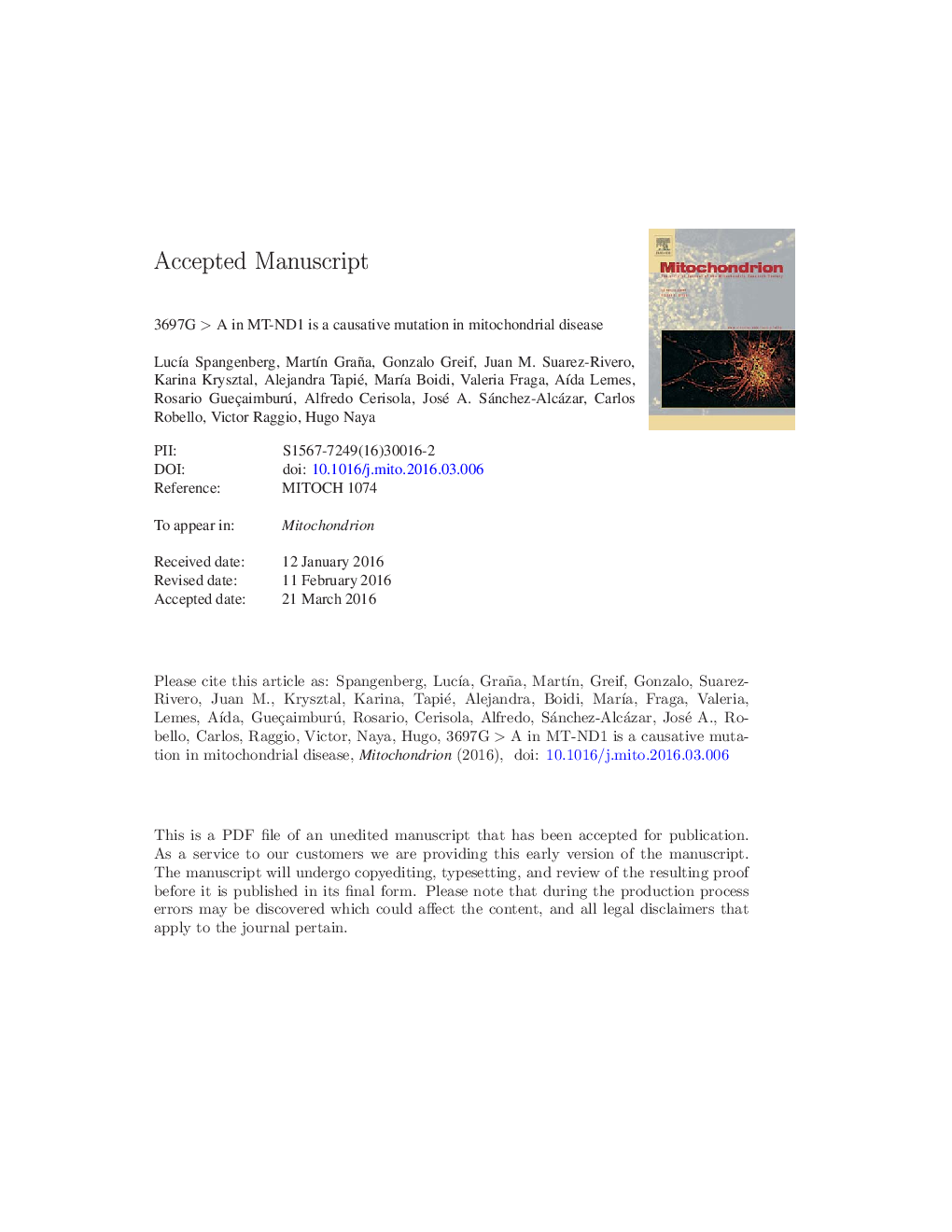| Article ID | Journal | Published Year | Pages | File Type |
|---|---|---|---|---|
| 8399111 | Mitochondrion | 2016 | 26 Pages |
Abstract
Using next generation sequencing we found that mutation 3697GÂ >Â A was responsible for the patient's clinical symptoms. Corroboration was performed via segregation analysis in mother and sister and by evolutionary analysis that showed that the mutation is located in a highly conserved region across a wide range of species. Functional analyses corroborated the mutation effect and indicated that the pathophysiological alterations were partially restored by Coenzyme Q10. In addition, we proposed that the presence of the mutation at high frequencies causes the phenotype in the patient, while other family members with intermediate levels of heteroplasmy are symptoms-free.
Related Topics
Life Sciences
Biochemistry, Genetics and Molecular Biology
Biophysics
Authors
LucÃa Spangenberg, MartÃn Graña, Gonzalo Greif, Juan M. Suarez-Rivero, Karina Krysztal, Alejandra Tapié, MarÃa Boidi, Valeria Fraga, AÃda Lemes, Rosario Gueçaimburú, Alfredo Cerisola, José A. Sánchez-Alcázar, Carlos Robello, Victor Raggio,
